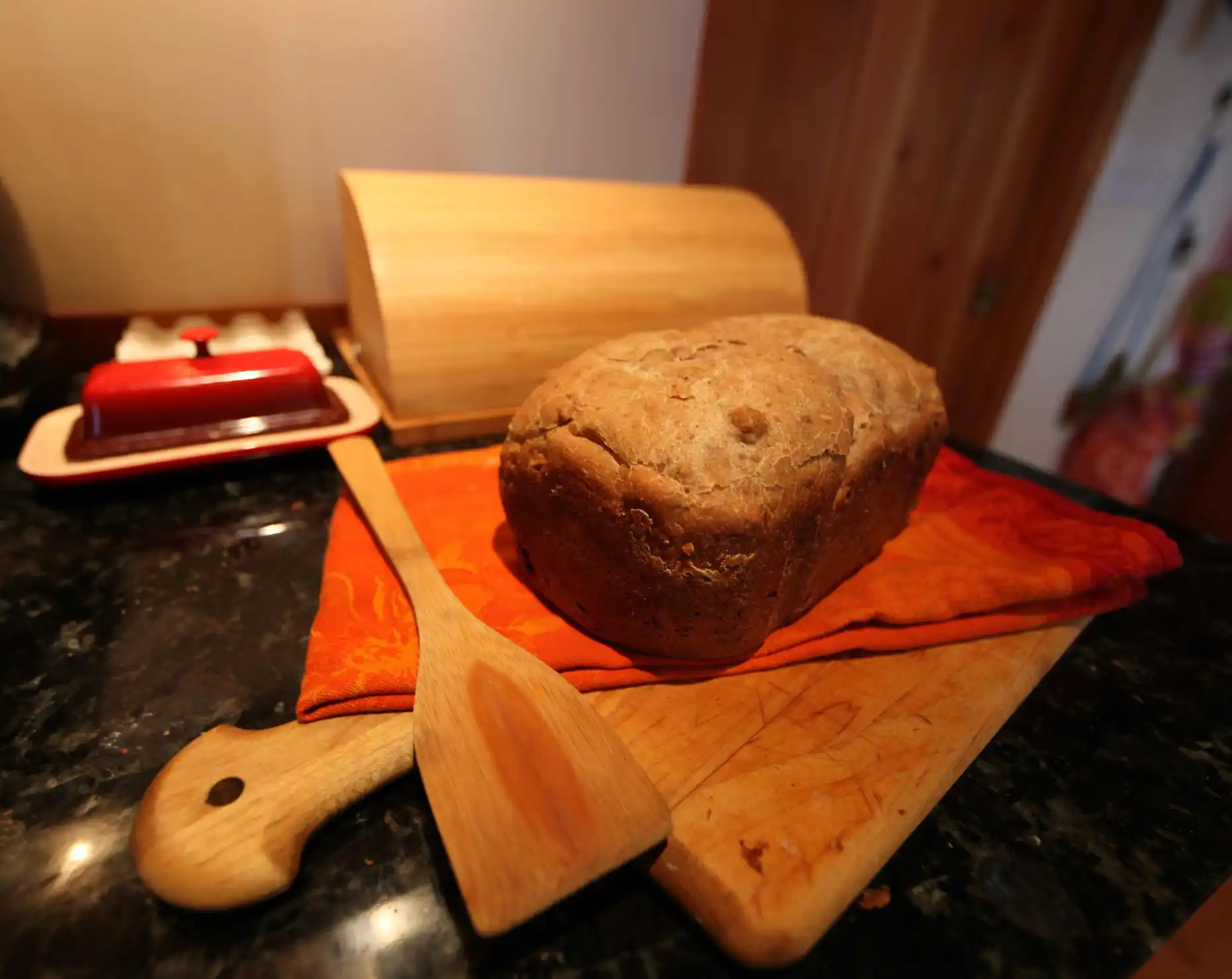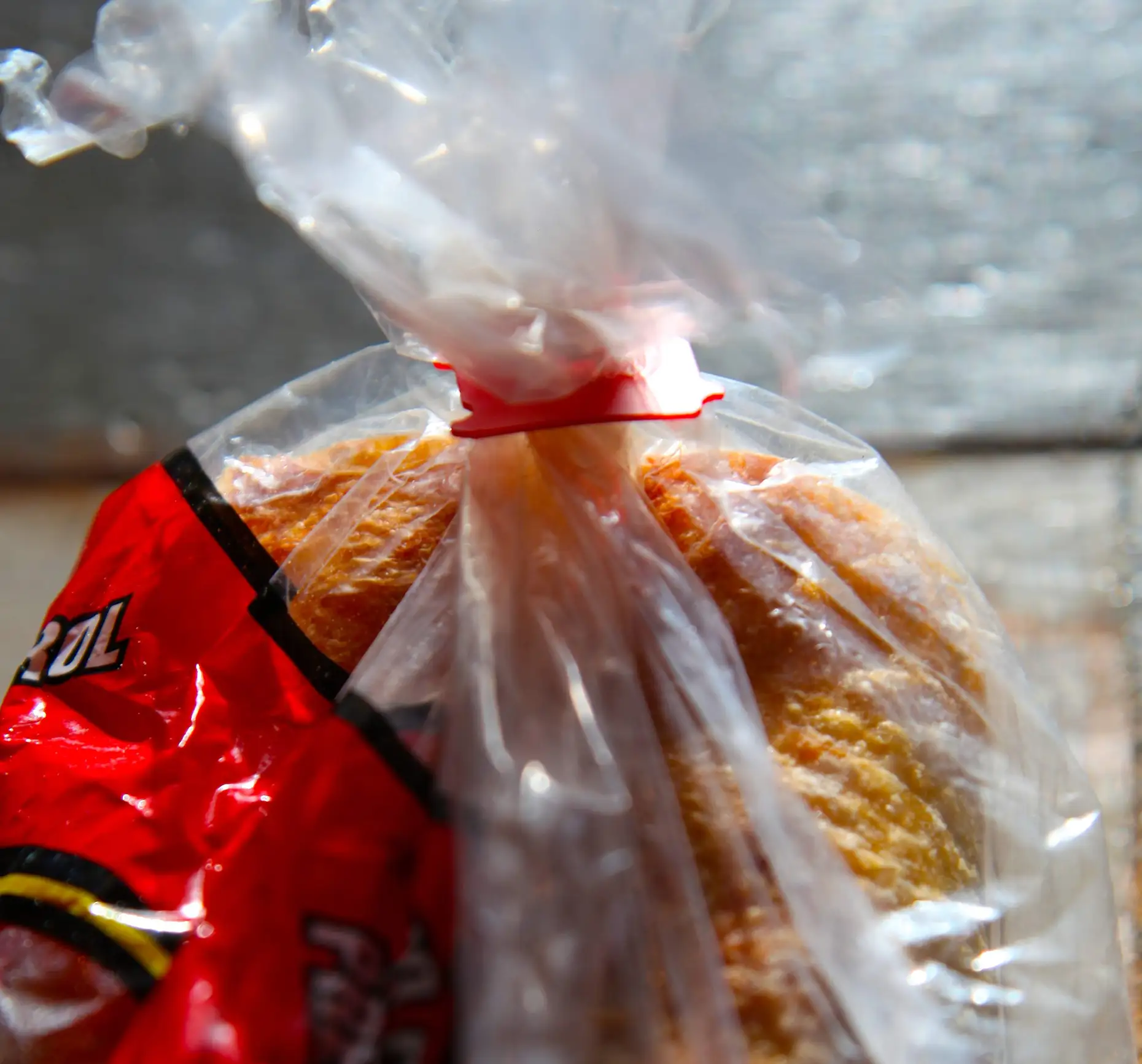I was once a breadmaking fanatic, because my breadmaker meant 4 minutes of prep and 3.3 hours later I’d have delicious wholesome organic bread that the whole family would devour. Unlike most breadmaker owners, we actually used our machine regularly. We’d been making bread from it non-stop for years, until this week.
Here were the obvious benefits of this delicious bread:
1) No plastic packaging.
2) Saves money. Our locally-baked bread costs about $5.00 per loaf. We buy our ingredients in bulk and each loaf costs us less than $1.00.
3) Nothing better than the smell (and taste) of home baked bread coming out of the oven.
But, truth be told, this bread has fluoropolymers leaching into it.
Let me back up a bit. A few years ago, I purged all things plastic from my kitchen. Especially plastic containers and Teflon-coated pans. I took our breadmaker to Best Buy for recycling because it had pans made of Teflon. I noticed, too, that the pans would peel this weird-looking plastic coating from them every year or so. That was the fluoropolymer coating that Dupont makes for all Teflon coated pans. This alarming article in The New York Times can fill you in on just how toxic fluoropolymers are.
So, I thought I would be clever and find a Teflon-free breadmaker, one safe for my family. Enter Zojirushi. Zojirushi makes what they call a Teflon-free breadmaker that we switched to after reading all the negative press about the potential health hazards of cooking with Teflon. We converted our entire kitchen into a Teflon-free zone, with the one exception of the breadmaker because we were ignorant. This machine is NOT teflon-free. In the product description it states “non-stick coated pan.” They coat it with a generic polymer that is….Teflon, but it’s just given a different name, fluoropolymer, the new fancy substitute that is an endocrine disruptor known to cause all kinds of cancers. It’s a sad state of affairs. I don’t believe there’s a bread machine out there that doesn’t have fluoropolymer coating.
Alas, if we want Teflon-free bread, we’ll have to make it sans breadmaker, in our clay or enamel-coated cast iron pans, with a little more care and attention to the process which might just make the bread taste even better. I grew up on homemade Teflon-free bread, and I’d like my children to have that privilege, too. I wonder if our local bakeries are using Teflon-free pans? It might not hurt to ask.
If you’re interested, here’s the recipe my family has eaten for years. Now they’ll have to enjoy it when I have more time to bake. It’s a whole wheat raisin and walnut bread that toasts perfectly, is moist, and has just the right amount of crunch in the crust.
Whole Wheat Walnut Raisin Bread
1 Cup warm water
3/4 Cup combination of liquid ingredients (we use 1 egg + milk and a little yogurt)
2 Tablespoons flax seed oil (you can substitute another nut oil, but flax seed oil is excellent)
1 Heaping teaspoon salt (we use a celtic sea salt)
3 Cups flour (we prefer one cup whole wheat and 2 cups white, all organic)
4 Handfuls walnuts (this is also excellent with flax seeds)
3-4 Handfuls raisins
1 Tablespoon honey
3/8 Teaspoon yeast (we add more as our yeast ages since we buy it in bulk)
If you like a little body to your bread, add about 1/4 cup shredded zucchini or carrot which we do when those veggies are in our garden.
I think I’ll try to simulate a breadmaker next time and just add all of these ingredients in this order, making sure the yeast is added near the honey so it can react to the sugars in it and place the whole thing near our fireplace to activate the yeast with honey so it can rise in a breadmaker-like simulation, but using a big bowl. Then, mix the dough and let it rise, punch it back down, knead it, and let it rise again in a plastic-free bread pan, then bake. This recipe makes a 2-3 lb loaf of bread. Might make sense to double it so you get 2 loaves for your effort.




Wow that’s looks nice… I have just started baking since 2 years ago.. I start to like it! Yah homemade is always the best…
Please visit and follow my Instagram (lazymom_cooking) and my blog (www.lazymomcooking.wordpress.com) for some recipe ideas 🙂
LikeLike
I like the old-fashioned way! 😉 We got rid of our bread-maker years ago.
LikeLike
If you want to avoid coated cast iron (for whatever reason), glass pyrex pans are great bread pans too.
LikeLike
Yes! I love my glass bread pans. Thanks for the reminder.
LikeLike
Great artisan no knead breads can be made on a ceramic baking sheet or in a cast iron pot.
LikeLike
Yes! I’d love to learn more. Do you have any good links to share?
LikeLike
Here’s my post: http://homeflavorschattanooga.com/2015/10/15/best-bread-ever/ Of course Google will have lots of choices.
LikeLike
Pingback: How To Recycle Plastic Bags | Pioneering The Simple Life
I worked in a Portuguese bakery in Canada, where we used steel loaf pans with shortening applied by brush before each use, which both prevented sticking and gave the loaves a nice crust. I expect a coated pan would be ruined in short order at the temperatures seen in a commercial oven (550°F where I worked), where the steel ones last a decade or more. Hope that helps.
LikeLike